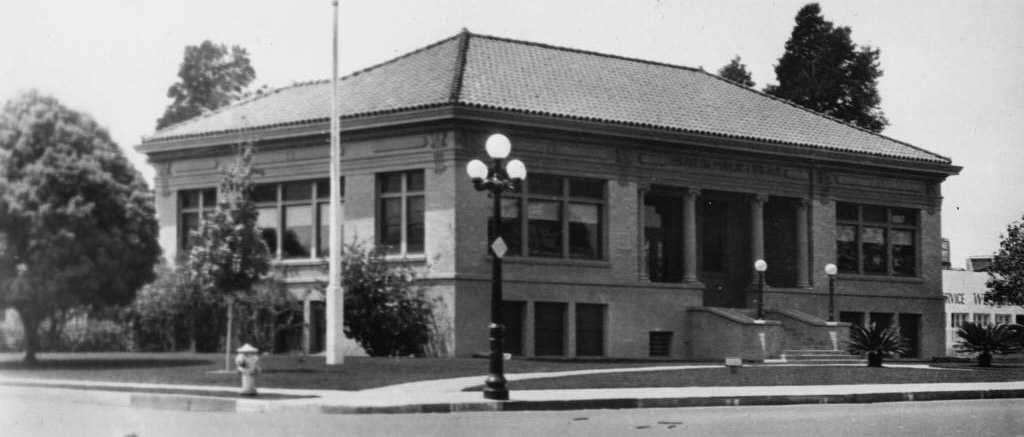In 1906, The Anaheim City Chamber of Commerce recognized the city’s need for a formal public library building. Up to this time, the city only had a book subscription service including a small selection of books housed in the back of a local general store.By 1907, the Chamber of Commerce had acquired a $10,000 grant from Andrew Carnegie’s office. The land necessary to construct the Carnegie Library building was purchased for a fraction of its regular cost at $2,400. The money to purchase the corner lot was raised by 75 local residents who deeply believed in the benefits of a public library for the flourishing city.
The Carnegie Library was designed by Los Angeles architect John C. Austin, with the final designs approved in early 1908. These final designs presented a building in a Classic Revival Style, which was commonly chosen for Carnegie-funded buildings. The red clay tile roof however was chosen as a nod to local history and classic Spanish design.
The Anaheim Library would not have evolved as it did without the dedication of passionate Anaheim citizens. During its time as a Public Library, the Carnegie Library building was lifted up by its librarians, whose careers lasted a remarkably long time. Head librarian Elizabeth Calnon and children’s librarian Elva Haskett served the library and Anaheim community for much of their lives, supporting the Public library throughout its significant growth.
As the city of Anaheim developed and the population increased, the small Carnegie Library was no longer capable of housing the ever-growing collection of books and the demand for library services. In response to this, the city opened a new Central Library nearby in 1963. After the transfer of libraries had been completed, the Carnegie Library was left vacant for three years before housing the city’s Personnel Department.
The Carnegie Library became a historical library, research center, and museum in 1978 and was officially recognized on the National Register of Historic Places in 1979.
The historic building has undergone renovations as the years passed and ADA laws were enacted. 1985 saw the addition of an elevator, support structures, new plumbing, and new electrical systems.
Mark Hall-Patton was a crucial force in the development of the Anaheim Museum, laying the groundwork for the Carnegie Library to become a thriving museum space for the community. He was the museum’s first employee in 1984 and became the Anaheim Museum’s first director. As the first director, Hall-Patton finalized the museum’s agreements with the city and raised funds to help the museum flourish.
Another driving force in the Anaheim Museum’s history is Mildred “Midge” Taggart. She worked tirelessly to acquire and preserve antiques and symbols of Anaheim’s history until they could be safely housed in a museum.
The Anaheim Museum, which had been residing in the historic Carnegie Library for decades, was replaced by Muzeo Museum and Cultural Center in 2007. The city saw this building as the perfect site for Muzeo due to the building’s rich history of community involvement and education, both core elements of Muzeo’s mission.
The Muzeo Museum and Cultural Center complex exhibits in both the historic Carnegie Library as well as a new main gallery building, built in 2007. While the majority of the galleries now primarily display artworks rather than artifacts, the Carnegie Library still exhibits a collection of artifacts rooted in Anaheim’s History, spanning from prehistoric times to the modern era.
Today, Muzeo stands as an integral part of the Anaheim community, seeking to bring together our local communities and ensure the accessibility of the arts and education.

